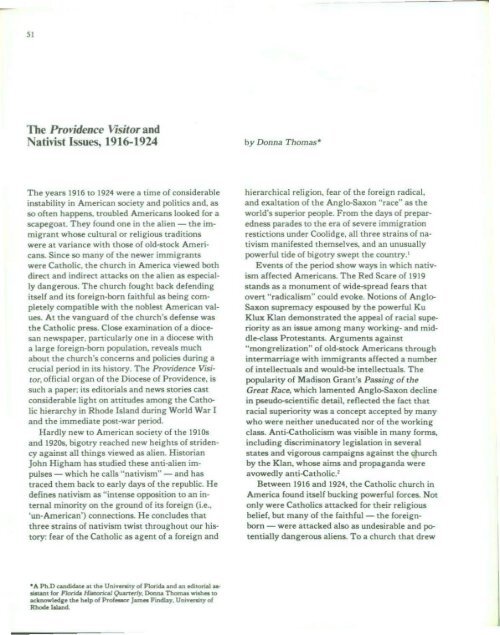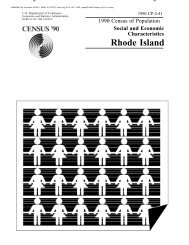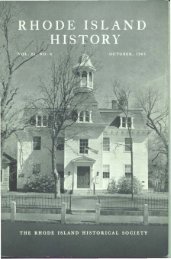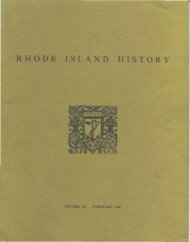RHODE ISLAND HISTORY - Rhode Island Historical Society
RHODE ISLAND HISTORY - Rhode Island Historical Society
RHODE ISLAND HISTORY - Rhode Island Historical Society
- No tags were found...
You also want an ePaper? Increase the reach of your titles
YUMPU automatically turns print PDFs into web optimized ePapers that Google loves.
- - --- - - - - -51The Providence VIsitor andNativist Issues, 1916-1924by Donna Thomes"The years 1916 to 1924 were a time of considerableinstability in American society and politics and. asso often happens. troubled Americans looked for ascapegoat. They found one in the alien - the immigrantwhose cultural or religious traditionswere at variance with those of old-stock Americans.Since so many of the newer immigrantswere Catholic. the church in America viewed bothdirect and indirect attacks on the alien as especiallydangerous. The church fought back defendingitself and its foreign-born faithful as being completelycompatible with the noblest American values.At the vanguard of the church's defense wasthe Catholic press. Close examination of a diocesannewspaper, particularly one in a diocese witha large foreign-born population. reveals muchabout the church's concerns and policies during acrucial period in its history. The Providence Vjsjtor.official organ of the Diocese of Providence, issuch a paper; its editorials and news stories castconsiderable light on attitudes among the Catholichierarchy in <strong>Rhode</strong> <strong>Island</strong> during World War Iand the immediate post-war period.Hardly new to American society of the 19105and 19205. bigotry reached new heights of stridencyagainst all things viewed as alien. HistorianJohn Higham has studied these anti-alien impulses- which he calls "nativism" - and hastraced them back to early days of the republic. Hedefines nativism as "intense opposition to an internalminority on the ground of its foreign (i.e.,'en-American') connections. He concludes thatthree strains of nativism twist throughout our history:fear of the Catholic as agent of a foreign andhierarchical religion, fear of the foreign radical.and exaltation of the Anglo-Saxon "race" as theworld's superior people. From the days of preparednessparades to the era of severe immigrationrestictions under Coolidge, all three strains of nativismmanifested themselves, and an unusuallypowerful tide of bigotry swept the country.'Events of the period show ways in which nativismaffected Americans. The Red Scare of 1919stands as a monument of wide-spread fears thatovert "radicalism" could evoke. Notions of An gloSaxon supremacy espoused by the powerful KuKlux Klan demonstrated the appeal of racial superiorityas an issue among many wo rking- and middle-classProtestants. Arguments against"mongrelization" of old-stock Americans throughintermarriage with immigrants affected a numberof intellectuals and would-be intellectuals. Thepopularity of Madison Grant's Passing of theGrear Race. which lamented Anglo-Saxon declinein pseudo-scientific detail, reflected the fact thatracial superiority was a concept accepted by manywho were neither uneducated nor of the workingclass. Anti-Catholicism was visible in many forms,including discriminatory legislation in severalstates and vigorous campaigns against the churchby the Klan, whose aims and propaganda wereavowedly anri-Catholic.!Between 1916 and 1924, the Catholic church inAmerica found itself bucking powerful forces. Notonly were Catholics attacked for their religiousbelief. but many of the faithful - the foreignborn- were attacked also as undesirable and p0tentially dangerous aliens. To a church that drew°A PhD andicbt~.tth~ Univenity of Floricb and an editorial_......1 f.... FloridI Him:Jric.J Quart",>,. o.::.m. n-n.. wiahes toacknowIedle theh~lpofProf_Junes FindlIoy. UnivenityofRhod< Iow.d











